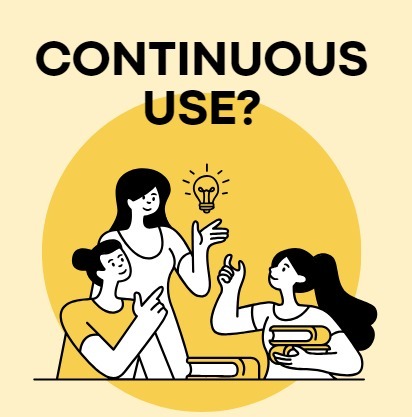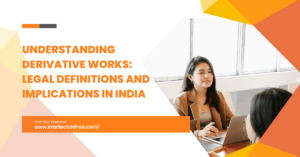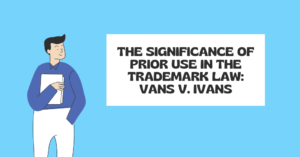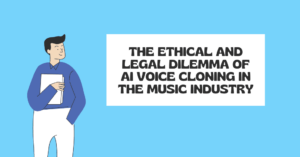While talking about Trademark law regime, the principle of ‘continuous use’ plays a crucial role in shaping the validity and enforceability of trademark rights. In India, similar to many other jurisdictions, one of the most known ways to establish the exclusive rights over a trademark is through continuous and consistent usage of the mark in commerce or in course of trade. Even if the formal registration is not granted, a trademark can still be protected based on its consistent use in the market. This article explores the principle of continuous use under Indian trademark law, its significance, and how it impacts the protection and enforcement of trademarks.
What is the Principle of Continuous Use?
The principle of continuous use in trademark law refers to the long and consistent use of a trademark by its owner in the course of trade in business. The continuous and uninterrupted use of the trademark assists in establishing the goodwill and reputation of the brand in the market. The older a trademark, the greater its reputation and goodwill.
The Trademarks Act, 1999, acknowledges the importance of continuous use by offering protection to both registered and unregistered trademarks. The primary aim of this principle is to ensure that the rights over a trademark belong to the entity that has genuinely used the mark in commerce over time.
The Legal Foundation of Continuous Use in India
According to Indian trademark law, Section 34 of the Trademarks Act, 1999, addresses the principle of continuous use, highlighting the concept of “prior use.” This section states that a registered trademark owner cannot prevent any individual or business from continuing to use a mark if they have been using it consistently since before the trademark was registered.
This provision is crucial as it emphasises use rather than registration. This means that even if a third party registers a trademark, the party that has been using the mark continuously for the longest time holds superior rights to it.
Key Points of Section 34:
- First Use Over Registration: The exclusive rights over a trademark are granted over the longer use and not on date of registration.
- Protection for Unregistered Marks: If a party has continuously used a trademark before another party’s registration of a similar mark, they hold the right to continue using that mark.
- Exception to Registration Rights: Continuous use acts as an exception to the exclusive rights of a registered trademark owner, while protecting the rights of the prior users.
Importance of Continuous Use
1. Establishing Priority
Continuous use plays a crucial role in establishing priority over a trademark. If there is a conflict in rights, the trademark used earlier and without interruption has better rights to claim its use over that of the owner if it contrasts with the registered trademark holder. This is especially relevant in India, where the “first-to-use” principle precedes the common law concept of a “First-to-file”.
2. Preventing Abandonment
This continuous use will prevent the trademark from being deemed abandoned. Failure to use a trademark without proper reason over an extended period may lead the authorities to declare it abandoned, and as such lose its rights. According to Indian trademark law, a mark needs to be used continuously in trade so as to retain its enforceability. Failure to do so can open the door for third parties to challenge the ownership of the trademark.
3. Reputation and Goodwill
The longer you use a trademark, the more related goodwill and recognition will be gained that are important elements for every brand. A business expands sufficient identity allowing consumers to relate the brand with quality, trustworthiness or in a specific product or service. A trademark that has been used continuously over time under Indian law may qualify as a “well-known trademark” and receive additional protection, even in categories where it is not even directly used.
4. Protection for Unregistered Trademarks
In the case of unregistered trademarks, continuous use is especially important. While unregistered marks are not protected under the Indian Trademarks Act, they may still be safeguarded by utilizing English common law rights called “passing off.” In as action of passing off, long time use would help the plaintiff establish that their mark has gathered good will and that the defendant’s use of a similar mark would likely deceive consumers and cause harm to their business.
Proving Continuous Use
Having continuous use and proving the same are two different things. Mentioned below are the kinds of documents that can be furnished in order to prove the continuous use of a particular trademark:
- User Affidavit: A user affidavit is a sworn statement or declaration provided by an individual or entity, typically in trademark filing, to support claims regarding the continuous use of a trademark.
- Invoices and Sales Records: Invoices and sales records helps in proving that goods and services offered under the trademarks have been sold consistently over the time.
- Advertising and Marketing Materials: Demonstrating that the trademark has been promoted through various channels, such as print, television, or online advertisements.
- Business Contracts and Agreements: The business agreements and contracts can help in establishing the continuous commercial use of the trademark.
- Product Packaging and Labels: Continuous use can also be established through the consistent appearance of the trademark on product packaging, labels, or in-store displays.
- Media Mentions: Articles, reviews, or other mentions of the brand in the media can help establish the trademark’s public recognition.
Challenges to Continuous Use
While continuous use is a strong principle in Indian trademark law, it does come with certain challenges:
- Proving Use: In cases of litigation, proving continuous use can be difficult, especially for businesses that do not maintain detailed records.
- Geographical Scope: The extent of use and its geographical reach can impact the strength of the claim. Use in a limited area may weaken the trademark holder’s claim in broader markets.
- Gaps in Use: Prlonged gaps in the business of a trademark, even if unintentional can result in jeopardising the continuous of the mark and giving the competitors opportunity to challenge the same.
Relevant Case Laws
- S. Syed Mohideen v. P. Sulochana Bai (2016) 2 SCC 683 is a significant judgement by the Supreme Court of India pertaining to prior use rights in trademark litigations. The court held that registration of a trademark even though after use does not confer absolute ownership over the same and more so when someone else has been using it.
The Supreme Court made clear that the rights of prior users are stronger than trademark registration. So just because a trademark is registered does not mean the original user of that domain cannot infringe on your rights.
- In another case of Peps Industries Private Limited v. Kurlon Limited, the Delhi High Court issued an interim injunction in the matter, ruling in favour of Peps Industries and prohibiting Kurlon from utilising the trademark “NO TURN.” Peps had been the registered owner of the mark since 2008, while Kurlon asserted that they had been using it since 2007. Nonetheless, Kurlon’s application was irregular. The court highlighted that prior use carries greater significance than registration, yet it also noted that Kurlon’s inconsistent use did not meet the criteria for “first use.”
The court decided in Peps’ favour, indicating that a mark can still receive protection even if it is descriptive, provided it has acquired distinctiveness through ongoing use.
Conclusion
The principle of continuous use serves as a fundamental aspect of trademark law in India, offering protection to businesses that have consistently used their trademarks over the years, regardless of registration status. It ensures that the true owner of a trademark is the one who has consistently utilised it in commerce, rather than simply the one who registered it first. Indian trademark law seeks to promote fairness and preserve the goodwill that businesses build around their brands by emphasising use rather than formal registration. It is essential for both businesses and individuals to consistently use their trademarks in order to protect their rights and avoid potential legal conflicts.










